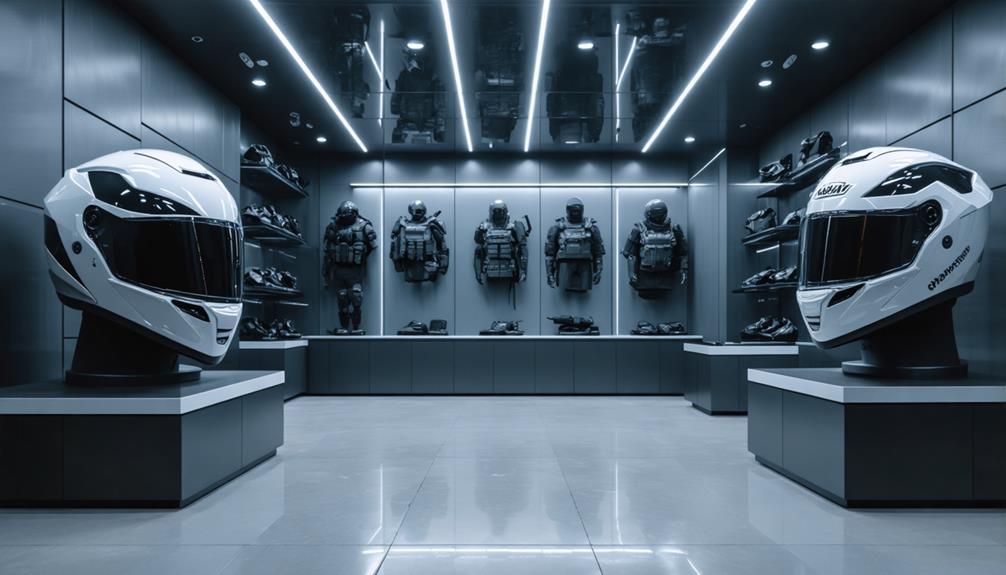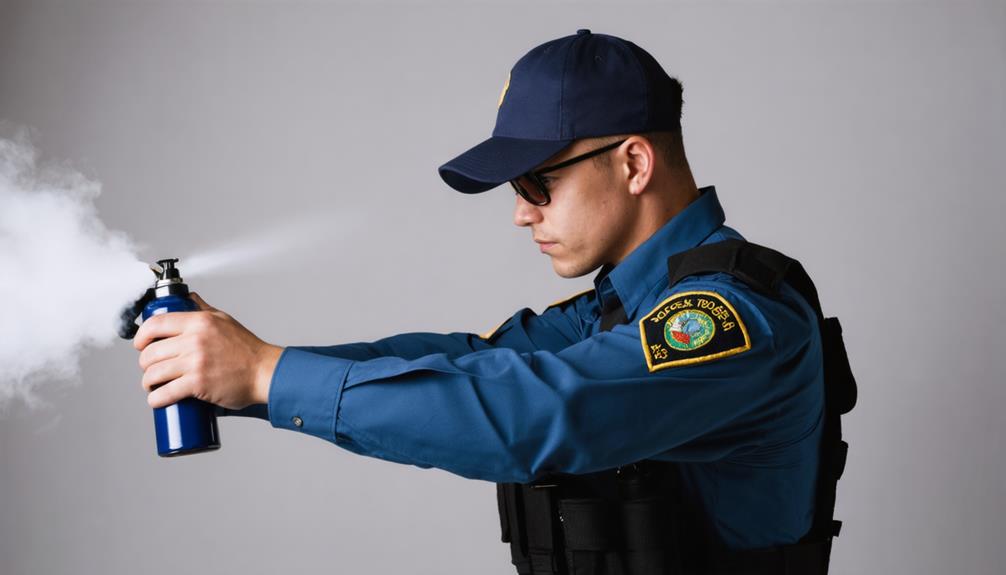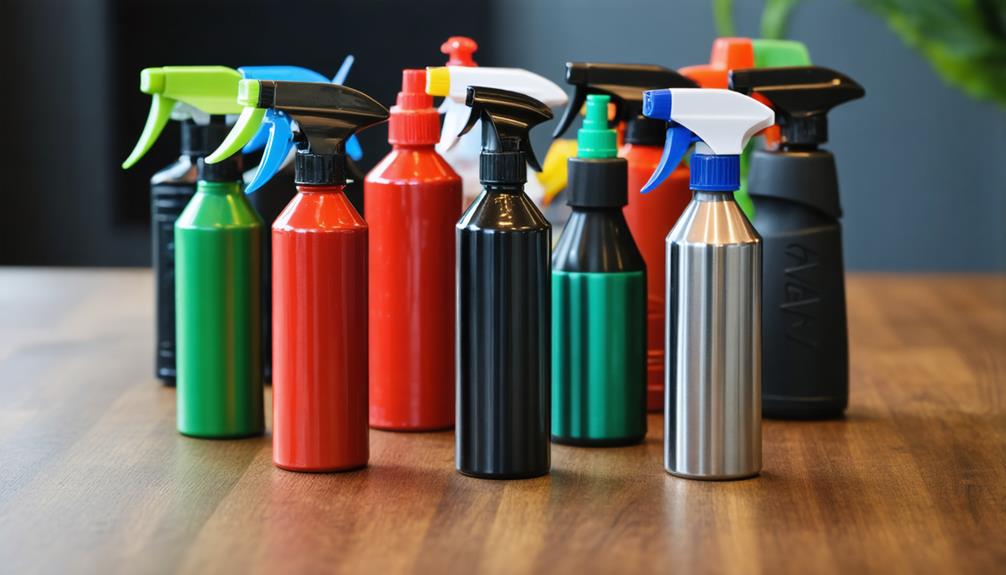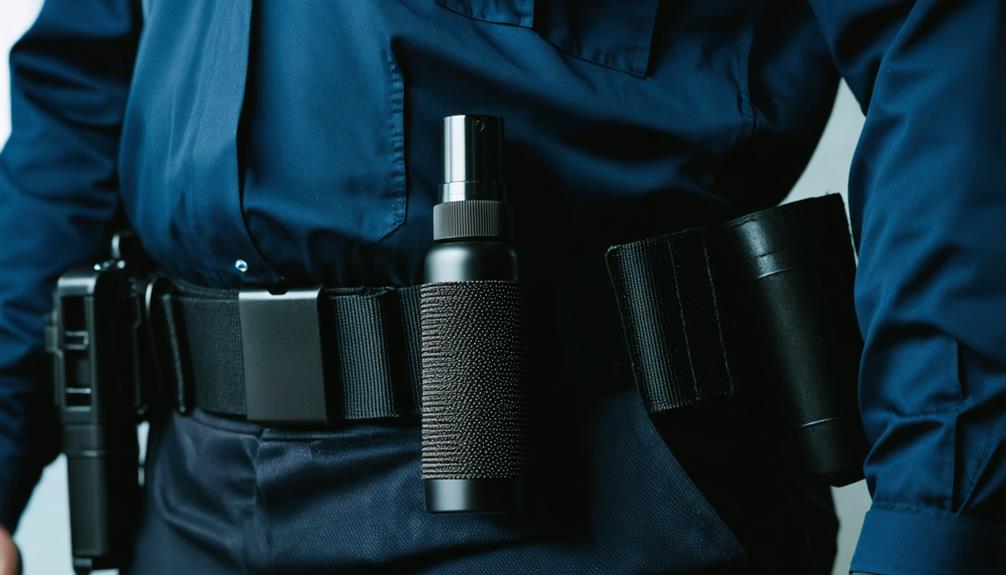
Brainstorm Security Shop

For Orders Over $199

On Any Of Our Products

Details On Refund Page
In the realm of security, the deployment of pepper spray stands as a critical component in the toolkit of modern security guards, offering a non-lethal means to neutralize potential threats. Its strategic application not only deters aggression but also serves as a preventive measure, ensuring the safety of both the guard and the public. However, the efficacy of pepper spray is heavily dependent on proper usage techniques and adherence to legal guidelines. What are the intricacies involved in selecting the right spray and ensuring guards are adequately trained and certified for its use?
Pepper spray, a non-lethal self-defense tool, plays a crucial role in enhancing the safety and effectiveness of security personnel. Its significance is rooted in a combination of historical development and modern formulation, making it an essential asset in the security industry.
The history of pepper spray dates back to the 1960s when it was initially formulated for use in law enforcement. Since then, it has evolved significantly, with advancements in spray formulation ensuring greater reliability and effectiveness.
The primary ingredient, oleoresin capsicum, is derived from chili peppers and has been refined over the years to achieve the optimal concentration for incapacitating targets without causing permanent harm. This refinement in spray formulation is critical, ensuring that security personnel can effectively neutralize threats with minimal risk of collateral damage.
Further, the compact and portable design of pepper spray makes it an indispensable tool for security guards, allowing for rapid deployment in emergencies.
Its historical evolution and continued innovation in formulation have established pepper spray as a trusted ally in the realm of security, underscoring its importance in providing a balanced approach to managing confrontations and maintaining public safety.
Equipping security guards with pepper spray significantly enhances their personal safety by providing a reliable method of self-defense in potentially dangerous situations.
As an effective deterrence tool, it helps prevent escalation by incapacitating threats without resorting to lethal force.
Moreover, its non-lethal nature ensures that guards can fulfill their duties responsibly while minimizing harm to individuals involved.
For security guards, enhancing personal safety is paramount to effectively managing potential threats and maintaining order.
Mastery of self defense techniques combined with heightened personal safety awareness can significantly reduce the risk of harm and promote a secure working environment.
As first responders to many incidents, security guards must be equipped with the necessary skills and tools to protect themselves while ensuring the safety of others.
To enhance personal safety, consider the following key points:
Integrating these strategies into daily routines not only enhances personal safety but also empowers security guards to maintain control, thereby fostering a safer environment for all.
As an effective deterrence tool, pepper spray offers security guards a non-lethal option to manage potentially dangerous situations. Its utility lies in its ability to incapacitate assailants temporarily, providing guards the necessary time to de-escalate conflicts or call for backup. This practical application is vital in environments where maintaining safety without escalating violence is paramount.
Security guards, often the first line of defense, benefit from the confidence that comes with carrying a reliable deterrence tool capable of handling various threats.
Historically, pepper spray has been employed by law enforcement and security personnel since the late 20th century. Its introduction marked a significant advancement in non-lethal defense methods, offering a safer alternative to firearms and physical confrontation. The historical context of its development underscores its importance, as it reflects society’s growing emphasis on minimizing harm while ensuring public safety.
In practical applications, pepper spray is lightweight, easy to carry, and simple to deploy, making it an ideal choice for security personnel. It serves as a deterrent, discouraging potential aggressors from engaging in hostile actions.
This capability to prevent violence before it escalates is a critical component of effective security strategy, highlighting its indispensable role in the security industry.
Pepper spray stands as a quintessential non-lethal defense option for security guards, offering an array of benefits tailored to their demanding role.
In an industry where maintaining safety without escalating violence is paramount, pepper spray emerges as an invaluable tool. It empowers security personnel to execute effective self-defense strategies while minimizing the risk of severe injury to both themselves and potential aggressors. This aligns with the core principles of emergency preparedness, ensuring that guards are equipped to handle volatile situations swiftly and decisively.
The following benefits highlight why pepper spray is favored as a non-lethal defense mechanism:

Understanding the proper usage techniques of pepper spray is crucial for security personnel to ensure both effectiveness and safety. A key aspect of proper usage involves understanding spray patterns, which vary between stream, cone, and fog. Each pattern has a distinct range and area of coverage, allowing security personnel to select the most suitable method based on situational needs. For instance, a stream pattern is ideal for targeting specific individuals with precision, whereas a cone pattern covers a broader area, potentially affecting multiple targets.
Another important consideration is wind direction. Utilizing pepper spray without accounting for wind can result in unintended exposure to the user or bystanders. It is essential to position oneself upwind of the threat to prevent blowback. This attention to environmental factors enhances safety and ensures that the pepper spray effectively neutralizes the threat.
| Technique | Key Considerations |
|---|---|
| Spray Patterns | Stream, Cone, Fog |
| Wind Direction | Position upwind of the threat |
| Target Accuracy | Aim for the face |
| Safe Distance | Maintain 1.5 to 3 meters |
Training in these techniques is pivotal. Regular practice will ensure that security personnel can deploy pepper spray effectively, minimizing risks and maximizing defensive potential.
When discussing the legal considerations of using pepper spray, it is essential for security personnel to be well-versed in the laws and regulations governing its use in their jurisdiction.
State regulations can vary significantly, affecting the legality of carrying and deploying pepper spray. Security guards must ensure compliance to avoid potential legal repercussions. Understanding these regulations is not only vital for adhering to the law but also for minimizing liability issues that may arise from improper use.
Security personnel should be aware of the following points:

Selecting the appropriate pepper spray is crucial for security personnel who need to effectively perform their duties while ensuring safety and compliance with legal standards. The decision involves understanding various spray types and adhering to dosage guidelines. Spray types include stream, cone, and foam, each with distinct advantages. A stream spray offers precision, reducing cross-contamination risk. The cone type disperses a fine mist, increasing the likelihood of affecting multiple targets but at the cost of potential overspray. Foam, meanwhile, sticks to the target, minimizing the chance of unintended exposure and is useful in indoor settings.
| Spray Type | Advantages | Disadvantages |
|---|---|---|
| Stream | Precise targeting | Limited range |
| Cone | Covers large area | Risk of overspray |
| Foam | Reduces backspray | Slower effect activation |
Proper dosage guidelines are essential to ensure effectiveness without causing excessive harm. Security personnel must understand the concentration levels of the active ingredient, oleoresin capsicum, typically ranging from 5% to 10%. Adhering to these guidelines ensures compliance with safety regulations and enhances operational effectiveness. By evaluating spray types and dosage guidelines, security staff can select the most suitable option for their specific requirements.
Equipping security personnel with the appropriate pepper spray is only part of ensuring their effectiveness and safety. Proper training and certification are imperative to maximize the utility of this defensive tool. Certification requirements typically involve a comprehensive curriculum that includes legal considerations, proper deployment techniques, and understanding the physical effects of pepper spray.
Such training programs ensure that security guards are not only knowledgeable but also adept at handling high-pressure situations where the use of pepper spray may be necessary.
Furthermore, spray maintenance is a crucial aspect of training that cannot be overlooked. Security personnel must be trained to routinely check their pepper spray canisters for expiration dates and any signs of malfunction. Proper maintenance protocols guarantee that the spray is always in optimal working condition, ready for use when required.
Key components of a comprehensive training program include:
Such a structured training and certification process ensures that security personnel are well-prepared and responsible in their duties.

Situational effectiveness is paramount in determining the successful deployment of pepper spray by security personnel. The ability to assess deployment scenarios quickly and accurately can significantly impact the outcome of an incident. Security guards must consider numerous variables when deciding if and when to use pepper spray. These variables include the proximity of the threat, the number of individuals involved, and whether the use of pepper spray could exacerbate the situation.
Environmental factors also play a critical role in the effectiveness of pepper spray. For instance, wind direction and speed can influence the dispersion of the spray, potentially affecting unintended targets or even the security personnel themselves.
Indoors, ventilation systems and confined spaces can alter the effectiveness and safety of deploying pepper spray. Guards must be trained to adapt to these environmental challenges to ensure the spray is used safely and effectively.
Moreover, understanding the context of each encounter—such as the presence of bystanders or vulnerable individuals—is essential for minimizing collateral harm. By considering these factors, security personnel can ensure that the use of pepper spray is both a strategic and judicious choice, thus enhancing their ability to manage threats effectively.
The effects of pepper spray on an assailant generally last between 20 to 90 minutes, depending on the pepper spray potency. Assailant recovery times may vary, influenced by individual reactions and the specific formulation of the spray used.
In windy conditions, pepper spray can still be effective if the user is mindful of wind direction and employs proper spray technique. Adjusting the angle and distance of spray can enhance accuracy and minimize unintended exposure.
The shelf life of a canister of pepper spray typically ranges from three to five years. Its effectiveness can be influenced by the expiration date and optimal storage conditions, which include cool, dry environments away from direct sunlight.
The health effects of pepper spray include respiratory distress, eye irritation, and skin inflammation. Adhering to safety precautions, such as using protective gear and maintaining a safe distance, can mitigate these risks during its deployment or handling.
Proper storage of pepper spray is crucial for ensuring safety. It should be kept in a cool, dry place, away from direct sunlight and heat sources. Adhering to safety precautions prevents accidental leakage or activation, safeguarding users and surroundings.
The incorporation of pepper spray into security protocols significantly enhances the safety and effectiveness of security personnel. This non-lethal tool empowers guards to manage threats while minimizing risks, provided there is proper training in usage techniques and legal considerations. By selecting the appropriate spray and obtaining necessary certifications, security personnel can effectively deter potential threats and maintain order. Ultimately, pepper spray serves as an essential component in the comprehensive safety strategy for security guards, balancing assertiveness with responsibility.
